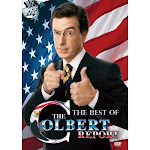Below is an editorial from the NY Times, as well as a written SOAPSTone response. We wanted you all to see what one looked like. Not too difficult, right? Be sure to contact us if you have any questions. Remember, you can find editorials under the "editorial" or "opinion" menus of the sites.
Editorial - F.D.A.’s Secret Files - NYTimes.com
Response to the editorial (your one-page journal entry using SOAPSTone):
In “FDA’s Secret Files,” the author pleads with the FDA’s new task force to assist the agency in making better decisions regarding the safety of medicinal drugs and devices. The occasion that triggered the author to share his opinion appears to be the selection of this new task force. It is quite evident that he/she is addressing this group, however, the writer wants to inform the public of what is already transpiring within the Federal Drug Administration. Throughout the editorial, the author uses the word “secret” and “transparency,” which leads the reader to believe that the FDA is hiding information from the public. At the same time, he/she wants the truth to be told, and for light to be shed on the adverse affects of the FDA’s secrets remaining undiscovered. The author also uses paradox, which greatly illustrates the contradiction of the FDA’s purpose and their actual practices.
Ultimately, however, the author wants to save lives. He/She wants to reveal these secrets and solicit help from the task force – all to prevent prescription-induced deaths from plaguing the public. The writer presents the information in a way that arouses emotions within the reader. For example, the author describes tragedies that have occurred with babies and children because he/she knows that inequities committed against children seem to incite people to take action. Not to mention, the author is using pathos to motivate the task force. Basically, the author is expressing that they would not want the death of people on their conscience. Furthermore, the author uses “kairos,” a powerful persuasive tool, when he/she states, “we urge you.” In doing this, he/she is suggesting the task force take immediate action to benefit the public, which includes doctors, patients, consumers and parents. He/She speaks on our behalf to show how so many are affected by the FDA's actions, and how the task force can better FDA's policies on sharing information; thus, saving lives.
Friday, June 5, 2009
Sample Editorial and Response
Posted by Mrs. Rodriguez, the teacher who loves you! at 6:54 PM
Subscribe to:
Post Comments (Atom)

3 comments:
Hello Ms. Rodriguez :) I have a question as to where exactly to write the responses. So you want us to like have an actual notebook where we write our responses or should we type and print them?
Thank you!
hello ms. rodriguez and ms. davis,
I would also like to know if we do the editorials in a notebook or typed and printed?
thank you.
Hi, ladies. Yes, you will do them in your notebook. You do not have to type them...unless you want to. When the school year begins, we will revise them and then you may have to type a few. Writing your responses by hand is just fine. Since you will be doing that for the AP test, and in a timed manner with no spell check help, I would almost prefer it.
Smile,
C-Rod
Post a Comment